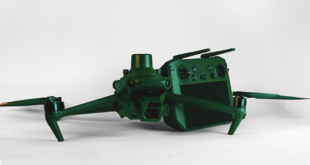IF THERE’S ONE thing we learned this week, it’s how trivial it is for a major part of the UK’s infrastructure to be completely grounded. It turns out that flying a drone near an airport is just as deadly to Britain’s travellers as the dreaded ‘leaves on the line.’
Gatwick airport is now open once again after a 48-hour closure which led to travel disruptions for more than 120,000 people. “We are now operating at almost normal runway conditions and the challenge for the airlines, as the result of this disruption, is that their planes are not all in the right place,” said Gatwick COO Chris Woodroofe, who presumably cannot wait for his Christmas holiday to kick in.
“So what we’ll be doing today is recovering their operations so by tomorrow we are back to standard operation and continue to recover the situation for our passengers.”
Friday 09.30: Gatwick’s runway is now available and aircraft are arriving and departing. There are knock-on delays and cancellations to flights and we strongly recommend that you check the status of your flight with your airline before setting out for the airport today. pic.twitter.com/W35C46TpNp
— Gatwick Airport LGW (@Gatwick_Airport) December 21, 2018
The airport is expected to be back to business as usual by Saturday evening, which will be little comfort to those who were supposed to leave on Wednesday night.
How can a tiny drone block 765 planes?
It may seem strange that a 1kg drone can keep an 80,000kg commercial airliner downed, but the little pests can cause all kinds of problems despite their tiny bodies and limited battery lives. But then aeroplanes have to be made of quite light materials to stay in the air, and that leaves them extremely vulnerable to high-speed collisions. Just take a look at this video from the University of Dayton, which models what an average hobby drone can do to an aeroplane wing when the aircraft in question is travelling at a nippy 238 miles per hour.
Other research highlights some pretty nasty consequences in event of a collision, from drones getting sucked into a turbine to lithium-ion batteries becoming lodged in airframes.
In other words, though the chance of collision may be small, the consequences could be enormous, so it’s understandable that Gatwick decided to keep passengers grounded rather than take a risk.
After the initial hiccup extended into a fully-fledged two-day coughing fit, a number of suggestions were mooted, including shooting the drones down, but concerns were raised about possible bullet ricochets, which is quite a big deal in an airport.
The truth seems to be that the UK is comically underprepared for drone disturbances – yes, it’s against the law to fly a drone within a kilometre of an airport (although it’s only been since July), but it seems our police force just assumed that outlawing something would be sufficient. China has signal-jamming technology that can block drones from half a mile away, Holland has drone-catching eagles, and France has decided that to catch a drone, you must think like a drone, by enlisting quadcopters with nets.
The vast majority of other countries also have far larger drone-free zones around airports than the UK. Spain and Germany start their zones at 1.5km from the airport, while the USA pushes this to 8km and South Africa goes all the way up to 10km.
Transport secretary Chris Grayling hinted that the government would be toughening up the country’s drone laws in response to the chaos, telling BBC Breakfast that lessons would have to be learned “very quickly from what’s happened.”
He continued: “I plan to convene discussion with other airports around the UK very quickly indeed so that they know what’s happened, they understand what lessons need to be learned, and we’ve put in place every measure we possibly can to ensure this can’t happen again.”
Hmmm. It’s doubtful that changing the laws would have made a difference: 1km or 10km, it’s unlikely whoever was responsible would have been put off by a larger no-drone-zone.
Perpetrators unknown
Speaking of the perpetrator, that’s still a mystery. Grayling himself said that there was “no evidence” that the Gatwick incident was “terror-related”, but police have been advancing a theory that it could have been environmental protestors. Assistant Chief Constable Steve Barry told BBC Breakfast that the force was following a “number of lines of inquiry,” but a careless prankster this most certainly was not. All the evidence – including the unusually long runtime and ability to evade geofencing technology – points to a device that had been modified for purpose.
As dronedefence.co.uk’s Richard Gill told The Sun: “To have evaded police radar for so long suggests some serious capability. For example, if they have adapted a drone and put a 3G card to fly it through phone-waves rather than radio waves to avoid capture they would need a masters degree or a PhD.”
Another possibility is that this is the work of state actors testing the waters of how much disruption can be caused with a small trial. Grayling stated this was “unlikely” but didn’t rule it out. “We genuinely don’t know who it is or what the motivation was,” he added.
The whole saga hasn’t just highlighted how unprepared the UK is for drone-based disruption, bad as that is. It’s made it pretty plain we don’t know what to do next, either. µ
 Unmanned Aerial Vehicle The latest drone news
Unmanned Aerial Vehicle The latest drone news



